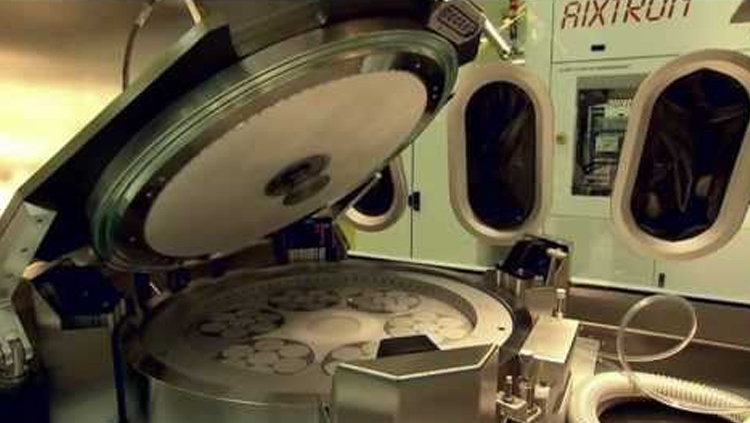News Article
IHS: GaN-on-Si LEDs to rocket from 1 to 40 percent marketshare
Apart from the fact that silicon substrates are cheap, 8-inch CMOS semiconductor companies will find it relatively inexpensive to shift to growing gallium nitride-on-silicon LEDs. This will make GaN-on-silicon increasingly popular over LEDs grown on sapphire and SiC substrates
The penetration of GaN-on-silicon wafers into the LED market is forecast to increase at a compound annual growth rate of 69 percent from 2013 to 2020.
By this time they will account for 40 percent of all GaN LEDs manufactured, according to a new report from IHS.
In 2013, 95 percent of GaN LEDs will be manufactured on sapphire wafers, while only 1 percent will be manufactured on silicon wafers. The growth in the manufacturing of GaN-on-silicon LEDs between 2013 and 2020 will take market share from both sapphire and SiC wafers.
The figure below shows the GaN-on-silicon LED market share outlook in terms of revenue for the packaged LED market.

“Manufacturing large ingots made from sapphire is difficult, whereas silicon wafers are available from 8 inches up to 12 inches and are generally cheaper and more abundant,” says Dkins Cho, senior analyst for lighting and LEDs at IHS. “There is a large pre-existing industry for silicon-based manufacturing that is leveraged to create economies of scale and reduce the cost of an LED.”
Repurposing manufacturing facilities to accommodate the shift toward GaN-on-silicon LEDs is generally accepted to require minimal investment. Companies that previously manufactured CMOS semiconductors already own legacy 8-inch CMOS fabrication units that can be converted for LED production with a small modification. These companies already have in-house expertise and technology associated with silicon-based processes.
“Many of the CMOS semiconductor manufacturers already have excellent inspection tools, unlike traditional LED companies,” Cho explains. “This could help increase their process yield through in-situ monitoring. However, it is unlikely the repurposing will happen overnight; instead we forecast a shift during the coming years.”
By this time they will account for 40 percent of all GaN LEDs manufactured, according to a new report from IHS.
In 2013, 95 percent of GaN LEDs will be manufactured on sapphire wafers, while only 1 percent will be manufactured on silicon wafers. The growth in the manufacturing of GaN-on-silicon LEDs between 2013 and 2020 will take market share from both sapphire and SiC wafers.
The figure below shows the GaN-on-silicon LED market share outlook in terms of revenue for the packaged LED market.

“Manufacturing large ingots made from sapphire is difficult, whereas silicon wafers are available from 8 inches up to 12 inches and are generally cheaper and more abundant,” says Dkins Cho, senior analyst for lighting and LEDs at IHS. “There is a large pre-existing industry for silicon-based manufacturing that is leveraged to create economies of scale and reduce the cost of an LED.”
Repurposing manufacturing facilities to accommodate the shift toward GaN-on-silicon LEDs is generally accepted to require minimal investment. Companies that previously manufactured CMOS semiconductors already own legacy 8-inch CMOS fabrication units that can be converted for LED production with a small modification. These companies already have in-house expertise and technology associated with silicon-based processes.
“Many of the CMOS semiconductor manufacturers already have excellent inspection tools, unlike traditional LED companies,” Cho explains. “This could help increase their process yield through in-situ monitoring. However, it is unlikely the repurposing will happen overnight; instead we forecast a shift during the coming years.”


































